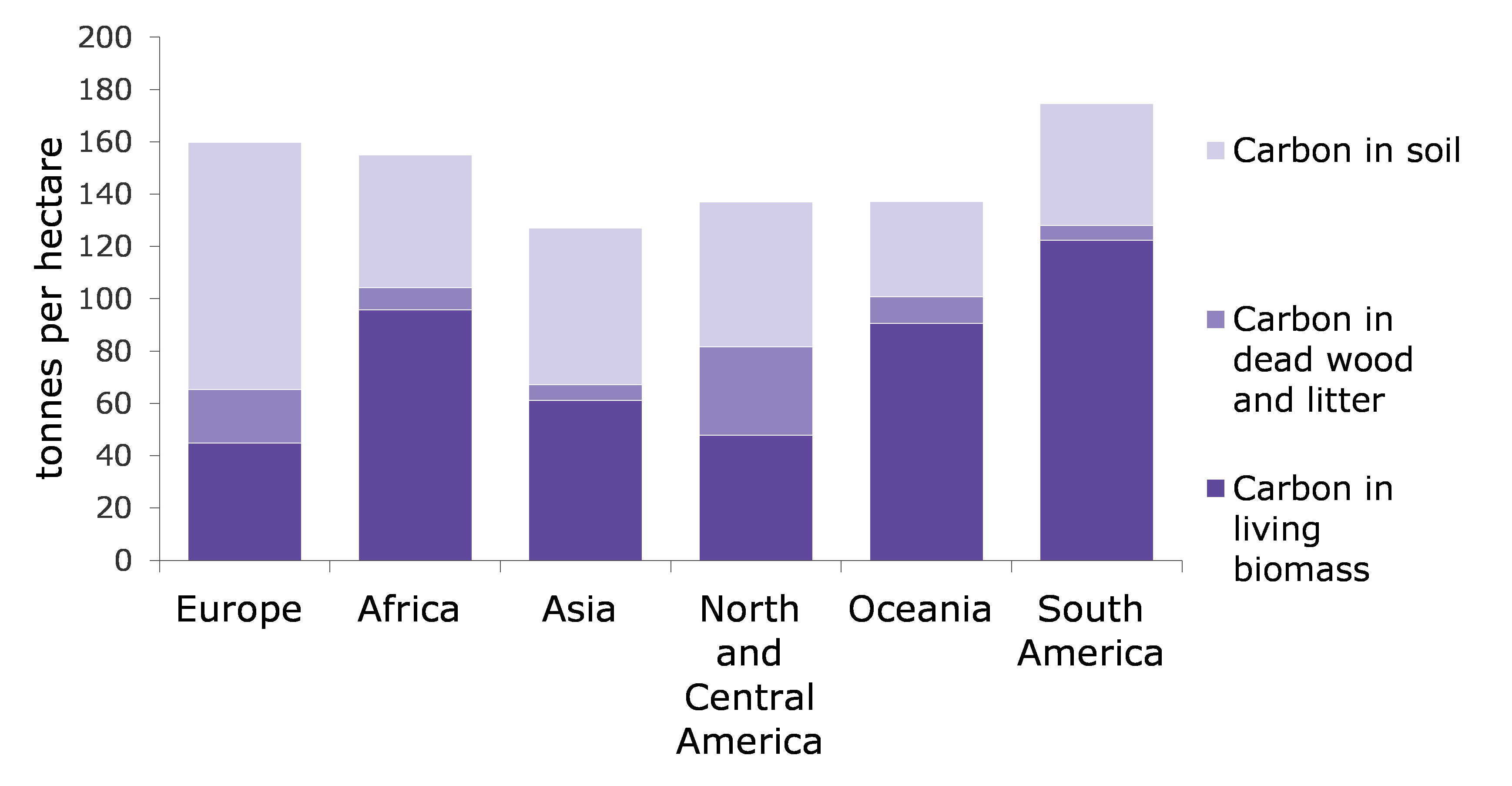Carbon stocks in forest living biomass have increased in Europe and North & Central America between 2010 and 2015, but have decreased at a global level, reflecting continuing trends since 1990 (Table 9.3).
The overall decrease has mainly been driven by declines in South America and Africa, where forest areas have decreased. Carbon stocks in biomass also declined slightly in Asia, where carbon sequestered in new plantations is not yet able to balance out carbon losses from areas of deforestation.
Table 9.3 Carbon stocks in forest living biomass by region, 1990-2015
| Region | 1990 | 2000 | 2005 | 2010 | 2015 |
| giga tonnes of carbon | |||||
| Europe | 41.4 | 42.5 | 43.2 | 44.4 | 45.5 |
| Africa | 66.5 | 63.5 | 62.1 | 60.8 | 59.7 |
| Asia | 38.1 | 37.7 | 37.2 | 36.8 | 36.3 |
| North and Central America | 33.9 | 34.9 | 35.3 | 35.6 | 35.9 |
| Oceania | 16.1 | 15.9 | 15.9 | 15.9 | 15.7 |
| South America | 111.5 | 107.8 | 105.5 | 104.0 | 103.1 |
| World | 307.6 | 302.3 | 299.2 | 297.6 | 296.2 |
Source: FAO Global Forest Resources Assessment 2015.
Notes:
1. A giga tonne is a thousand million tonnes (109 tonnes).
These figures are outside the scope of National Statistics. For further information see the Sources chapter.
Figure 9.4 Forest carbon stock per hectare by region, 2015

Source: FAO Global Forest Resources Assessment 2015.
These figures are outside the scope of National Statistics. For further information see the Sources chapter.
Sources chapter: International Forestry